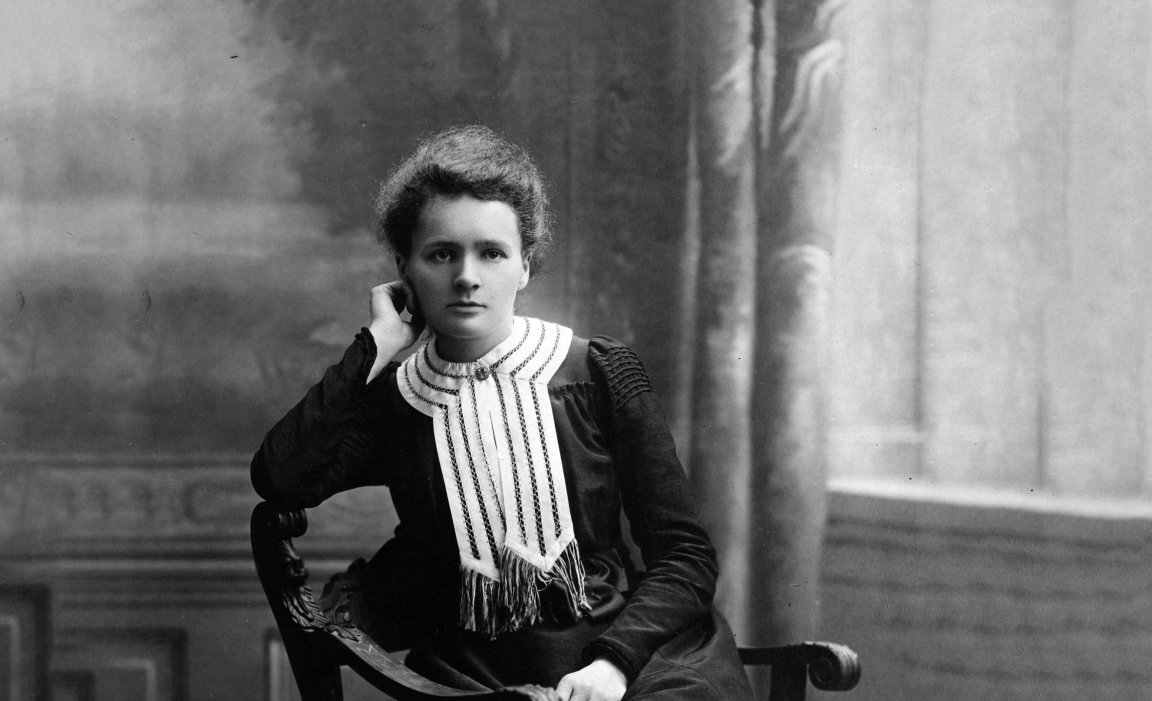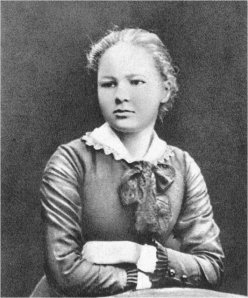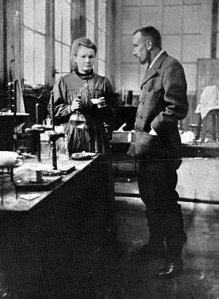
Everything about Marie Curie was exceptional. To start with, how many people can you think of who have four Nobel Prize laureates in their immediate family? She did! Marie, her husband (Pierre), her daughter (Irene), and her son-in-law (Frederic) were all Nobel Prize winners.
Moreover, how many scientists do you know who were awarded the prestigious Nobel Prize twice in two different scientific disciplines? Marie! The first time she won it in physics, in 1903, and the second time in chemistry, in 1911.
Marie Curie was the first woman in the history of science to win the Nobel Prize. She was the first woman in Europe to earn a doctorate degree in scientific research, and the first female lecturer and professor at the Sorbonne University in Paris. Her discoveries in radiation (a word she coined) changed the world, and to this day she remains one of the most famous female scientists ever.
A Great Life:
The more I read about Marie Curie’s life and work, the more I realize how extraordinarily rich her personal life and her scientific contributions were. She had to overcome gargantuan obstacles and humiliating rejections because she was a woman. But evidently, it made her stronger and more determined to succeed.
When I think of Marie’s stamina and talent, a funny comparison comes to mind. I remember the quote: “Remember, Ginger Rogers did everything Fred Astaire did, but she did it backwards and in high heels.” Marie Curie did all that Ginger Rogers did, but in the much more masculine world of science.

Marie Curie was born Marya Salomee Sklodowska (sklaw DAWF skah) on November 7, 1867 in Warsaw, in the Russian sector of Poland (at the time, Poland was divided between Russia, Austria, and Prussia). Her father, Wladyslaw Sklodowski, taught physics and mathematics at high school, and Manya (as she was affectionately called) inherited her passion for science from him.
Her mother, Bronislava Boguska Sklodowska, was a director of Warsaw’s prestigious boarding school for girls, but died of tuberculosis when Marya was still very young. Unfortunately, the family lost their property and fortunes because of patriotic involvement in Polish national risings, fighting for the restoration of Poland’s independence. This made the lives of Marya and her siblings (she was the youngest of five children) much harder financially and socially.
The Education Begins:
When Marya turned ten, she began attending the boarding school of J. Sirroorska and later, a gymnasium for girls, where she graduated in 1883 with a gold medal (the highest honor). Despite her excellent academic achievements, Marya was unable to enroll in a higher education institution due to her gender. She and her sister, Bronya, who wanted to become a doctor, started attending the “Floating University” where students met illegally to study (this underground night school had to change locations constantly – hence the name). In defiance of the Russian authorities, the Floating University admitted women and taught a pro-Polish curriculum.
Marya soon realized that this kind of fly-by-night education wasn’t going to be enough for her scientific ambitions and she made a pact with Bronya: she would earn money by tutoring to send Bronya to university in Paris, France, where many Polish people went to study. Then Bronya would pay for Marya to attend a university in Paris. They would both earn their advanced degrees and pursue their careers.
In order to earn money, Marya became a governess for the Zorawski family near Warsaw. There she fell in love with their oldest son, Kazmierz Zorawski, who later became a prominent mathematician and a professor at Krakow University. Kazimierz’s parents opposed the idea of their son marrying a penniless governess, which left Marya utterly heartbroken. Still, she never stopped working and in the fall of 1891, she boarded a train to Paris to join her sister and her husband (Bronya had married a doctor of Polish descent). Marya was twenty-four years old.
In Paris Marya used “Marie”, the French version of her name, and enrolled at the Sorbonne. She left her sister’s apartment to move closer to the university and spent many hours at the school’s library so that she wouldn’t have to go back to her freezing apartment. She was so poor that she existed on radishes and bread, and often fainted from hunger. Marie worked hard, graduating at the top of her class in 1893, with a Master’s degree in physics, then, on a scholarship, a degree in mathematics, earned in 1894.
Finding Love:
Marie was working on post-graduate research on the magnetic properties of various metals (the project was financed by an industrial company) when she met Pierre Curie, her future husband, collaborator, and soul-mate. Pierre was ten years her senior and had a respectable position as an instructor and a Lab Chief at the School of Physics and Chemistry. They fell in love and Pierre proposed marriage. Marie didn’t accept his proposal right away as she was still hoping to return to Poland and work there as a scientist.

To her disappointment, Krakow University denied her a place because she was a woman. Pierre was so madly in love with her that he was ready to give up his work and move to Poland. He kept writing love letters and, in 1895, Marie returned to France. They got married on July 26, 1895. The dark blue suit she wore at her wedding, served Marie as a lab outfit for many years to come. She and Pierre spent their honeymoon cycling around the French countryside.
In 1897, their first daughter, Irene, was born. Marie, however, wasn’t willing to settle down to the traditional life of mother and wife and decided to earn a doctorate degree (quite unheard of in those days). This meant that she had to find a new topic of study.
Inspired by work of Henri Becquerel, Marie began to look into uranium rays as a possible field of research for her thesis. In 1896, Henri Becquerel discovered that uranium salts emitted rays with similar properties to X-rays, but no external source of energy was needed (like light) to generate radioactivity. Marie decided to focus on the source of the mysterious rays given off by uranium and set up her laboratory in a small, leaky, and poorly ventilated wooden shed. There, within two months, she made an important discovery: radiation wasn’t the outcome of molecular interactions, but came from the atom itself. This was the first step in disproving an established view that atoms were indivisible.
The Discovery of Radium:
Working side by side with her husband, Marie began using piezoelectric techniques, devised by Pierre, to work on pinchblende and torbernite, both uranium ores. They used the electrometer, which was perfected by Pierre and his brother, Jacques, to show that pinchblende was four times as active as uranium itself, and torbernite twice as active. These discoveries led Marie to search for other substances that emit radiation.

She found that the element thorium was also radioactive. In July 1898, Marie announced her new discovery – she had found a new element, which she named “polonium” in honor of her native Poland. A few months later, Marie and Pierre announced the discovery of another radioactive element – radium (whose name is derived from the Polish word for happiness, Radość) .
It took Marie and Pierre another four years before they were able to isolate enough radium to prove that this element really existed and had an atomic weight different from other elements. In 1903 Marie and Pierre shared the Nobel Prize in Physics with Henry Becquerel for the discovery of radioactive materials (although, at first the Nobel Prize Committee wanted to recognize only Pierre and Henri for their work. Pierre insisted they add Marie’s name to the nomination). That same year, Marie was awarded her doctorate from the University of Paris, and the couple was invited to the Royal Institute in London to give a talk on radioactivity. Only Pierre was allowed to speak, because Marie was a woman.
A Great Loss:
In December 1904, Marie gave birth to their second daughter, Eve (in 1903 Marie lost a child, born prematurely). Meanwhile, a new industry began to develop based on radium, but since the Curies did not patent their discovery (they believed in free access to scientific knowledge), they did not benefit financially from this profitable business. The French government wanted to reward the Curies by offering a professorship in physics to Pierre at the Sorbonne, and a new lab for the Curies’ future work together.
Unfortunately, this wasn’t meant to be. On April 19, 1906, Pierre was killed suddenly in a road accident. Marie was devastated by Pierre’s death. After the accident, the French government offered Marie a national pension, which she refused. But she did accept the physics professorship at the Sorbonne, which made her the university’s first female faculty member. What followed next were difficult times and emotional turmoil when Marie was denied election to the French Academy of Sciences as a “foreigner”. There was an ugly scandal involving love affair with Paul Langevin, a physicist and a friend. Marie was in Belgium when the scandal broke, and on her return, she found an angry mob in front of her house. She had to seek shelter at a friend’s apartment.
It’s estimated that over one million wounded soldiers were treated with her X
ray units.
Despite all these difficulties, Marie continued her work on isolating pure polonium and pure radium, and searched for medical applications of radiation. In 1911, she was awarded her second Nobel Prize, this time in chemistry. A month later, Marie was hospitalized with depression and a kidney ailment. She avoided public life and returned to her lab fourteen months later. During World War I, when France asked its citizens to donate their gold and silver to help the war effort, Marie offered all her medals, including both Nobel Prizes.
The French government refused to accept such valuable possession and returned the medals to her. Marie came up with an idea for field radiological centers near the front lines to help battlefield surgeons. She developed mobile radiography units, known as “petites Curies” (“little Curies”) and began training other women as operators. She established two hundred permanent X-ray installations in France and Belgium. It’s estimated that over one million wounded soldiers were treated with her X-ray units. At the same time, Marie and her daughter Irene, worked to develop medical applications for radium.
The Final Days:
After the war ended, Marie Curie campaigned to raise funds for a hospital and laboratory devoted to radiology. She toured the United States twice (in 1921, and 1929) to raise money for her research. In 1924, she published a biography of her husband, Pierre Curie, and continued her work at the Radium Institute in Paris (she was made director in 1912), alongside her daughter Irene, and her son-in law, Frederic.
By the end of the 1920s, Marie’s health began to deteriorate. She suffered from fatigue, humming in her ears, dizziness, a low-grade fever, and gradual loss of eyesight. She was diagnosed with pernicious anemia, most likely an effect of the high levels of radiation she was exposed to for many years, and died on July 4, 1934. To this day, the papers she wrote in the 1890s are considered too dangerous to handle because they are still highly radioactive. They are kept in lead-lined boxes and anyone who wishes to look at them must wear protective clothing.
Albert Einstein, who knew Marie Curie well, remarked that Marie was probably the only person not corrupted by fame. And he was right. Marie was humble and honest, and often insisted that all monetary gifts and awards be given to scientific institutions rather than her. To me, Marie Curie is a true scientist. Science for genuine scientists is like poetry – it cannot be a profession, or even a hobby. It can only be an entire way of being.
All images: Photographer unknown. Public domain. Via NIST.gov